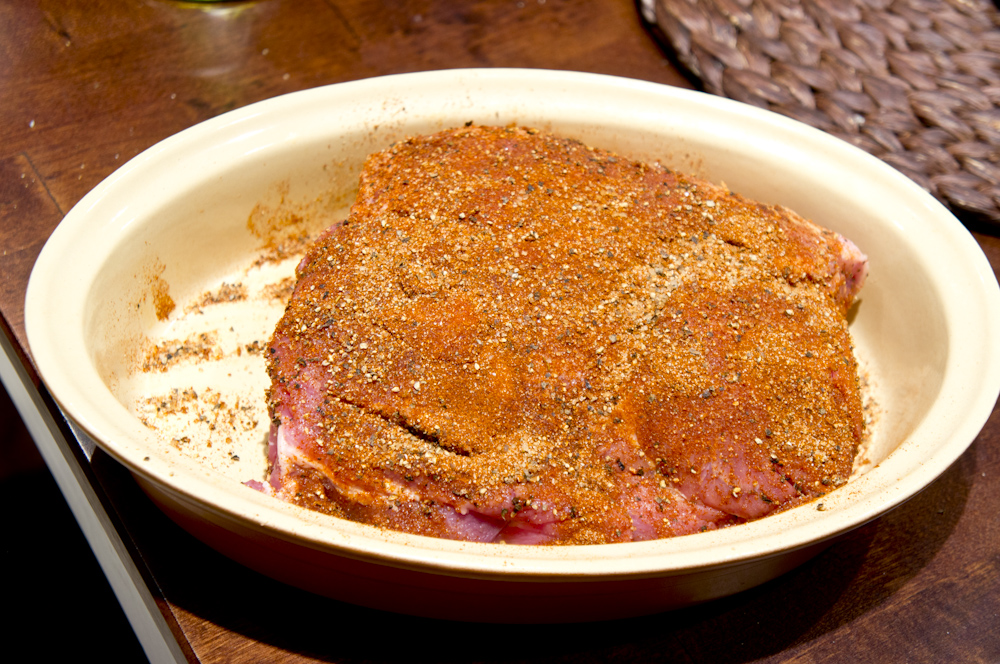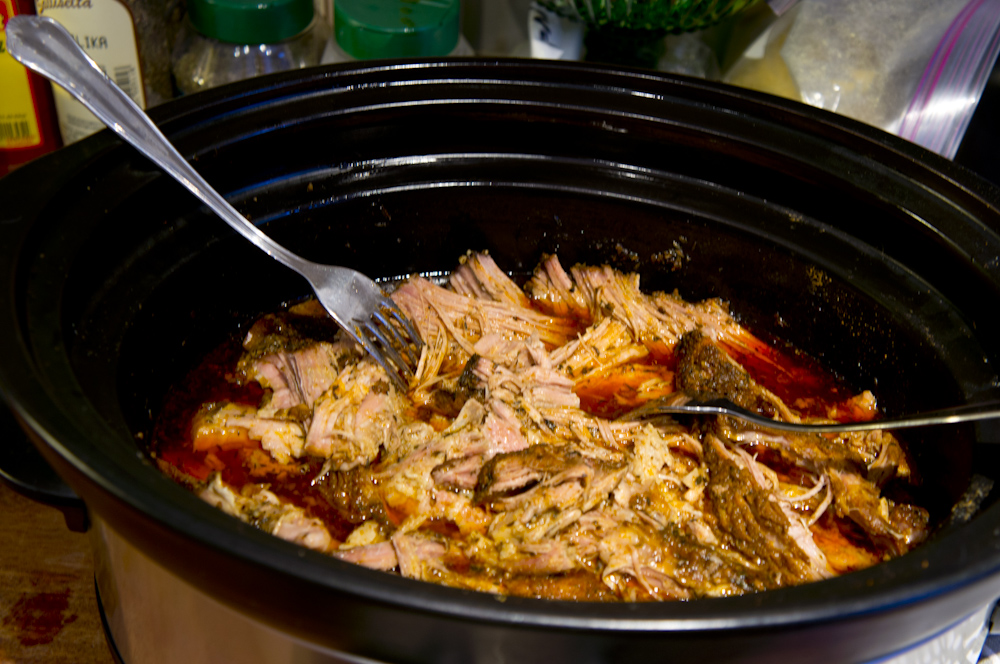Chili Donuts!

Pulled pork, or shredded pork shoulder, is currently a hugely popular dish. It’s incredibly tasty and suits a wide range of uses – from burgers to salads or even baking. Among those who cook using low temperatures, pulled pork has been a favorite for decades.
The internet is full of different recipes – some better than others. We decided to take our time, thoroughly research the subject, and share our findings so that you can succeed every time. If you want to start with the simplest way to make truly delicious pulled pork, check out our under-five-minute recipe video!
This Poppamies pulled pork recipe is designed for the home kitchen. If you’re into smoking, check out our pulled pork recipe for the smoker as well. (Only in Finnish) The method is very simple when all the pitfalls are already accounted for. With our instructions, your weight loss during cooking can stay below 25%, and you’ll end up with extremely juicy results. The best reported result was just 19% weight loss using pork neck.
We’ve put together a quick checklist that can be used by those who have already tried other recipes. This recipe was developed through dozens of test runs, and we’re presenting what we believe is the best version. We’ve taken into account home cooking conditions, available equipment, Finnish meat, and local taste preferences. If you’re interested in going deeper, the end of this article contains a more detailed deep dive into pulled pork preparation.
The goal here is a juicy result using the low & slow method. The result won’t be ruined if you use a higher temperature, but it will turn out differently.

In this video, we take a closer look at how to prepare pulled pork on the grill. (Only in Finnish)
Equipment: A lidded baking dish that’s only a few centimeters wider than the meat, a marinade injector, and a probe thermometer with a cord.
Remove excess fat and membranes from the surface of the meat, especially any firm lumps of fat. If you prefer fattier meat, you can leave more fat on.
Generously rub seasoning onto the surface of the meat using Poppamies Burger & Ribs RUB or Slow Food RUB, about 50 g per kilogram or 1.5 tablespoons per 400 g of meat.
Place the meat in a baking dish and moisten the seasoning layer with apple juice or cola. For pieces over 2 kg, inject a salty liquid (about 6%, i.e., 60 g of salt per liter of liquid) such as apple juice, water, or meat stock into the meat – about 50–100 ml per kilogram. Insert the thermometer probe into the thickest part of the meat. Set your oven to about 110–120°C and maintain that temperature throughout. Cover the meat with a lid; foil will work if no lid is available.

Cook at 110–120°C and monitor the temperature. Pork neck is ready to be pulled when its internal temperature reaches 87–90°C. If desired, you can moisten the spice crust once or twice during cooking using apple juice or cola. If you keep the lid or foil on throughout, you probably won’t need to moisten it at all. If you speed up the process by increasing the temperature, the result will be different.
Let the meat rest in the baking dish under a lid for about an hour. Shred the meat directly in the same dish with its juices. If there is a lot of liquid, reduce it by simmering and then mix it with the shredded meat.

Mix the shredded meat in a bowl with BBQ sauce (Smoky Apple BBQ Sauce or Smoky Hickory BBQ Sauce) and heat only the portion you plan to serve.
or
Mix with BBQ sauce and spread on a baking sheet (or suitable dish) in a roughly 2 cm thick layer. Roast on the top rack under the broiler at 225°C for 5–10 minutes until crispy on top. Juicy on the inside and crispy on the outside is a great combination for burgers or warm salads.
Preheat the oven to 100–120°C. You can verify the temperature with an oven thermometer. We recommend using a thermometer, at least to monitor the internal temperature of the meat. If your oven has both convection and top/bottom heating, we recommend using the convection setting.
While the oven heats up, trim away excess membranes and any thick fat cap from the meat. Especially remove hard lumps of fat that feel firm to the touch, as well as thick layers of fat that can prevent flavors from penetrating the meat. If you prefer fattier meat, you can leave more fat on the surface.
Rub the surface of the meat with RUB seasoning (1.5 tbsp per 400 g of meat) and place it in a covered baking dish. Covering the meat keeps the humidity stable inside the dish and prevents meat juices from evaporating into the drier surrounding air.
Moisten the seasoning layer with a liquid before putting the lid on the dish, for example with apple juice or cola. We personally prefer classic Coca-Cola. A spray bottle is a handy tool here, allowing you to moisten the meat without rinsing off the seasoning.
If your cut of meat is over 2 kg, we recommend using a marinade injector. Inject about 0.5 dl per kilogram of a 6% salty liquid (i.e., 60 g salt per liter) such as apple juice, meat broth, or water into several parts of the meat. For very large cuts over 5 kg, injection is always recommended. Surface seasoning alone won’t deliver enough salt inside, and salt also helps retain moisture in the meat. Alternatively, you can soak the meat in a brine solution for a couple of days.
Insert a meat thermometer into the center of the meat, cover it, and place it in the oven. For a 1 kg cut, cooking takes about 4 hours depending on thickness. You cannot shortcut this by raising the oven temperature without changing the result. While the meat may finish faster, the internal temperature will rise too quickly before the meat has tenderized. Eventually the meat will become tender, but the moisture loss will be greater and the texture different. We’re talking small differences, but you’ll notice them if you compare side by side at different temperatures.
Pork is best for pulling when the internal temperature reaches 87–89°C, but it should not reach this too quickly. If the internal temp approaches this range too fast, lower the oven temperature slightly, but not below 90°C—otherwise the meat will start to tighten up. Tenderization starts at around 70°C, but pay close attention once it crosses 80°C. As a rule of thumb, a 1 kg pork neck that’s about 10 cm thick is usually done about 2–3 hours after it reaches 110°C.
You can moisten the surface with apple juice or cola once or twice during cooking, especially if the cut is very large and the cooking time long. This should be done quickly—a spray bottle works great here, as it’s fast and doesn’t rinse off the spices. If the spice crust is still moist, you don’t need to moisten it again.
When the internal temperature reaches 87°C, take the dish out of the oven and quickly test with two forks by pulling in opposite directions—if the meat is tender enough to shred. If not, continue cooking and test again after about an hour. The internal temp should then be around 88–89°C.
For best results, shred the meat in the same dish with the juices that were released during cooking. Store any leftovers in the same liquid. If there’s a lot of liquid, reduce it by simmering and then mix it back in with the shredded meat.
There are two popular serving methods: mixed with BBQ sauce and reheated, or roasted. Especially for burgers, we recommend the roasted version.

We used these products in this recipe.
Check more recipes from the same category.
Let us and others know what you thought of the recipe. Did you tweak it in any way? Share your tips with others!
Leave a Reply